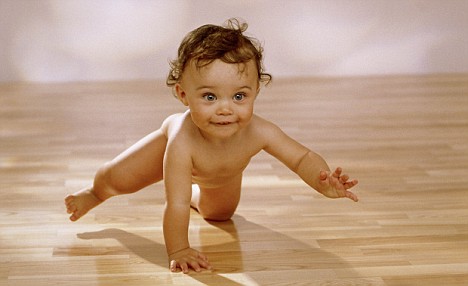You came out of the 4 month sleep regression unscathed (sort of) and things are going pretty well in sleep-land when BAM! the 8-10 month sleep regression hits you like a ton of bricks. Babies seem to always be going through 'something' - whether it be a growth spurt, a mental leap, a regression, or some other super-fun phase that gets in the way of sleep. If we are prepared for these 'regressions' and understand why they are occurring, it can make it easier to get through and perhaps help to avoid a true 'regression' at all. Read on to find out about the two main reasons for the 8-10 month sleep regression, the 4 month sleep regression's less popular friend.
What is a sleep regression?
The 4 month sleep regression is vastly different from the 8-10 month sleep regression because the 4 month sleep 'regression' isn't really a true 'regression'. A regression would mean that, with time, the baby's sleep would eventually resume as usual, but unfortunately, that's not what happens. The changes in a baby's sleep at 3-5 month's of age are here to stay. With the 8-10 month sleep regression, the changes are often temporary and are due to a baby's brain development. There is a lot that goes on cognitively at this age, and all of these changes can affect baby's sleep - whether that means they start waking more at night and/or start fighting/refusing naps. Not coincidentally, these 'regressions' (which generally occur at 4 months, 8-10 months, and 18 months) all occur around the same time as nap transitions. If we aren't prepared to handle these changes in baby's sleep, this can lead to the child becoming overtired, overtiredness leads to difficulty falling and staying asleep, and before we know it, a 'regression' has occurred.
8-10 month sleep regression cause #1 - Physical milestones
There is so much going on in baby's life at this age. They might be sitting up, scooting, crawling, pulling up, cruising, and some might even start walking. Baby is also learning the basics of communication and might start teething (if they haven't already). This is a lot in a little baby's life, and all these things take time, energy, and practice. Sometimes this 'practice' can occur at the wrong times, when baby should instead be sleeping. It can be hard for a baby to learn to shut down their brain, particularly a child that doesn't have self-soothing skills to begin with. Those babies that need more help to sleep may now start to really fight your soothing efforts, finding them too stimulating, and may try to take these opportunities of your company to show you their sweet new moves. If your 20 minutes of rocking has now become 60 minutes, that may be your baby's way of telling you that they are ready to be going down more awake on on their own, as your presence is inhibiting their ability to fall asleep, instead of helping.
If your baby is already an independent sleeper and has started to have some serious party time in their crib before sleep times, firstly you want to make sure that their environment is conducive to sleep. We want to be extra-vigilant that there is nothing stimulating in our child's crib and that their room is pitch black. A baby can be stimulated by anything - a wallpaper design, a toy across the room, a pattern on their crib sheets - so making sure that room is nice and dark will surely bore them into sleep (check out this company here that makes awesome custom window covers to get baby's room pitch black). As well, using a sleepsack for naps and nighttime helps to cut down on monkey business - it's not impossible to roll/sit up/crawl/stand with a sleepsack on, but it makes it more difficult. If baby is already sleepy, they might decide it's not worth the fight. Additionally, make sure your baby's sleep schedule is meeting his needs. Does he need a bit more awake time before naps so that he's tired enough to sleep easily? Here's a good way to determine if pushing a nap later might help:
If your baby is taking a long time to fall asleep (much more than 15 minutes) with lots of protesting/playing but then still takes a good nap (over 1 hour) that he wakes up happy from - try pushing that nap 15 minutes later.
If your baby falls asleep quickly at naptime, but then takes a short nap (under an hour) that they wake up happy from - try pushing that nap 15 minutes later.
If your baby falls asleep quickly for a nap, but then takes a short nap (under an hour) that they wake up crying from - try pulling the nap back by 15 minutes.
If your baby falls asleep within 1-15 minutes for a nap and then takes a long nap (over 1 hour) - you have nailed it, don't change a thing.
What not to do:
Don't give too much attention to the nap/bedtime battles. You don't want to make long-term habits for a short-term phase. This regression will pass in time, but if you make a habit of now rocking the child, letting them sleep in your bed, sitting with them until they fall asleep (unless you are already doing these things), or skipping naps entirely, this regression now turns into a new habit for the child, one that will be tough to break.
8-10 month sleep regression cause #2 - Nap transition
Eight months is the age where your 3rd catnap needs to be eliminated, if it hasn't already. Especially if you are finding the child refuses this nap at least 50% of the time, if the 3rd nap is occurring much past 4:00pm, or if with the 3rd nap, you are now clocking less than 11 hours of sleep at night - it's time to go. I generally recommend that even if you're not seeing these obvious signs of readiness by 8 months of age, you should still begin the transition towards a two nap schedule. Nap transitions are tricky and they can be messy if we're not handling them properly. If we jump too quickly into a two nap schedule, this can cause baby to become overtired... and a regression is born. Nap transitions aren't a race - slow and steady really is best. Start by slowly adding awake time before each of your naps - maybe 5 minutes onto all of them or 15 minutes before one nap. The best order to add time in is middle first (2nd and 3rd nap) then 1st nap, then bedtime. It is normal during a nap transition to flip-flop back and forth between 2 nap and 3 nap days depending on baby's wake-up time and the quality of the naps. With time, you will find that you are unable to fit in a 3rd nap before 4:00pm so you'll want to use an early bedtime to compensate. I can't stress this enough, this is where nap transitions go wrong. Parents become too stuck on a 'set' bedtime, but now that we've lost an entire sleep period, that stretch between the 2nd nap and the 'set' bedtime is way too long, causing the child to become overtired (bedtime battles, nightwakings, sleep-cries, and potentially an early wake-up the next day are all symptoms of a too-late bedtime). There is no advantage to a later bedtime if the child is awake crying every 3-4 hours because the bedtime was too late. Do not be afraid of a temporary early bedtime during nap transitions - it is essential.
What not to do:
Don't let that third nap hang around too long if it's obviously causing issues with nightsleep. Naps are important but nightsleep is far superior. If your 3rd nap is interfering with nightsleep and causing baby to clock less than 11 hours at night - it's time to go.
Don't rush the transition - slow and steady is best.
Don't stall in the transition. You need to continue to slowly stretch baby's awake times to move them to a solid 2 nap schedule. Your day will likely start out like this:
7:00am - wake-up
9:30am-11:00am - nap 1
1:45pm-3:15pm - nap 2
6:15pm - bedtime
and should eventually look like this:
7:00am - wake-up
10:00am-11:30am - nap 1
3:00pm-4:00pm - nap 2
7:30pm - bedtime
Sleep regressions are an exhausting part of parenting but we all go through it at some point. During these times, just remember to be flexible, be prepared, and be careful not to create a new sleep crutch (or bring back an old one). As hard as it can be to remain consistent at times, it really is best for everyone and helps the regression pass in a more timely manner. If you’d like my information on the 3-2 transition, check out my Comprehensive Nap Transition Guide here!
Pam Edwards is a Certified Infant & Child Sleep Consultant and founder of Wee Bee Dreaming Pediatric Sleep Consulting in Grande Prairie, Alberta. Healthy sleep is addicting and she has made it her life mission to help families all across the world get the sleep they deserve - a good night's sleep doesn't have to be a dream!


